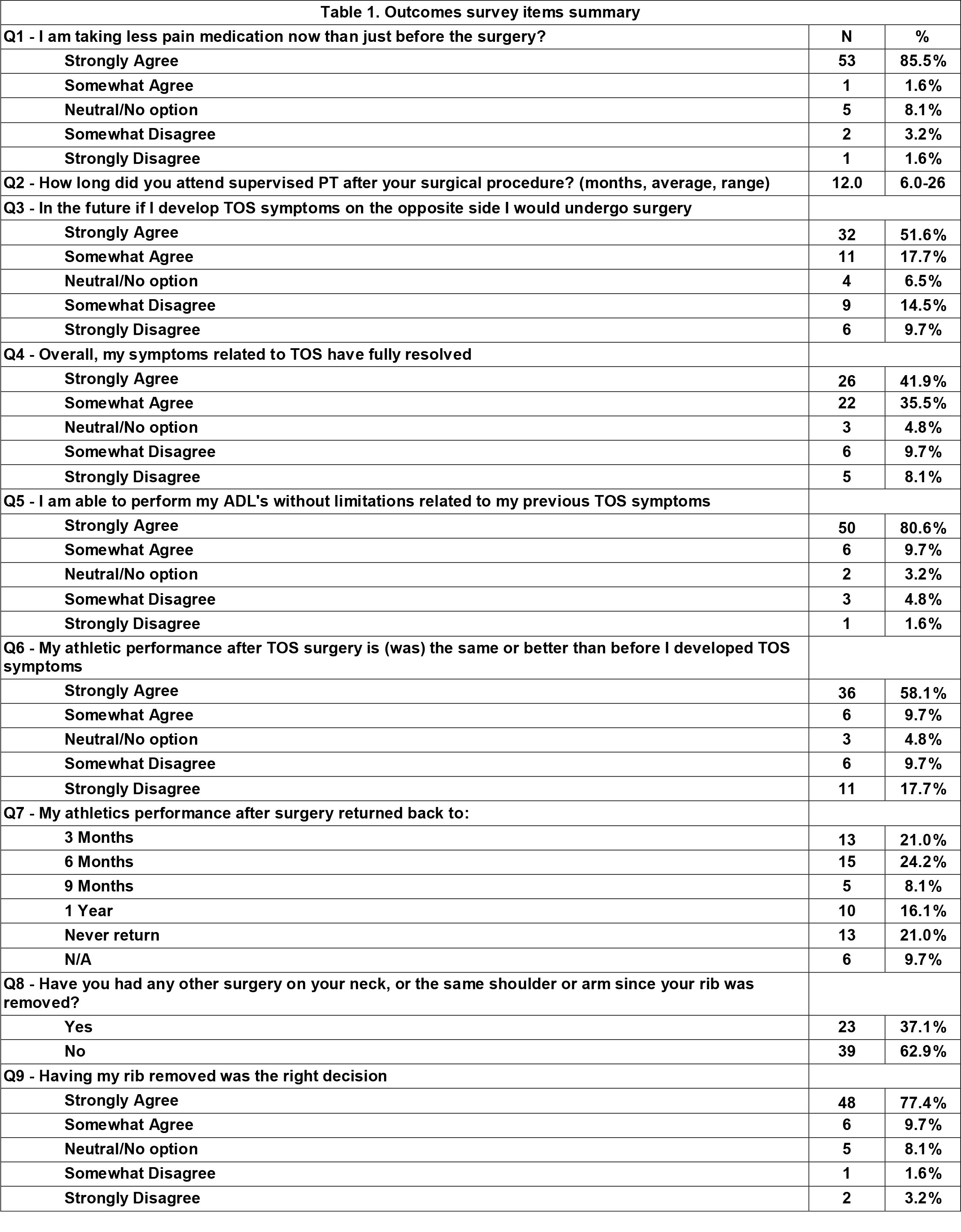Back to 2017 Annual Meeting Program
Competitive athletes: Immediate and long term results of first rib resection and scalenectomy for thoracic outlet syndrome
William P Shutze, Sr.1, Allen Dao2, Kimberly Tran2, Ryan Shutze3, Brad Richardson4, Greg Pearl1, Gerald Ogola5, Allan Young1, Pouria Parsa1
1Baylor University Medical Center, Dallas, TX;2University of Texas at Dallas, Richardson, TX;3Texas Vascular Associates, Dallas, TX;4University of South Alabama Department of Surgery, Mobile, AL;5Baylor Scott and White Health, Dallas, TX
Background
Neurogenic thoracic outlet syndrome (nTOS) develops secondary to repetitive motion of the upper extremity. Competitive athletes (CA) performing repetitive motion in their respective activities are at risk for nTOS. First rib resection and scalenectomy (FRRS) may be required for symptomatic relief and return to competition. This vulnerable population has not been previously studied for the results of FRRS.
Methods
Demographic, historical, procedural and follow-up data for every patient treated (by the senior author) for nTOS from July 2009-May 2014 were entered into a dedicated data base. These patients were contacted to complete a 9 question survey to assess the effect FRRS on pain medication use, postoperative physical therapy duration, patient satisfaction (willingness to do the surgery again), symptom relief, effect on activities of daily living, athletic performance, time to return of athletic performance and need for other surgeries (of the neck, shoulder or arm). A multivariate analysis of the following risk factors: age, pectoralis minor release, pre-operative narcotic use, athletic shutdown, and involvement in a throwing sport was performed.
Results
During the study period 564 patients had FRRS for nTOS. There were 221 competitive athletes and 67 (35 male, 32 female) with an average (range) age of 19 (14-48) years responded to the survey. The breakdown consisted 48 (72%) white and 19 (28%) non-white patients participating in the following sports: baseball/softball (45), volleyball (8), band/musician (3), cheerleading/gymnastics (5), diving (1), football (1), swimming (1), other (1) and who performed at the high school (36), collegiate (24) and professional levels (7). Survey results (Table 1) revealed that 90% were improved in pain medication use, 75% would undergo FRRS on the contralateral side if needed, 82% had resolution of TOS symptoms, 94% were able to perform activities of daily living (ADLs) without limitation, 73% returned to at least the same or better level of athletic activity after FRRS and this occurred within one year in 70%. Although 37% of respondents required another procedure after FRRS overwhelmingly 95% felt that they had made the right decision. Multivariable regression analysis showed increase in age to significantly increase the duration of supervised physical therapy, and pre-op narcotics use to be associated with increased resolution of nTOS symptoms. Other risks factors were statistically insignificant.
Conclusions
The majority of CA are able to return to their pre-competitive state after FRRS and few have limitations in their ADLs. While additional procedures are necessary in over 1/3rd of these patients almost half return to competition by 6 months and the majority within one year. The vast majority are pleased with their decision to have FRRS and would do it again. Further
investigation remains to be done for predictive factors for successful return to competitive athletics in this population.

Back to 2017 Annual Meeting Program




